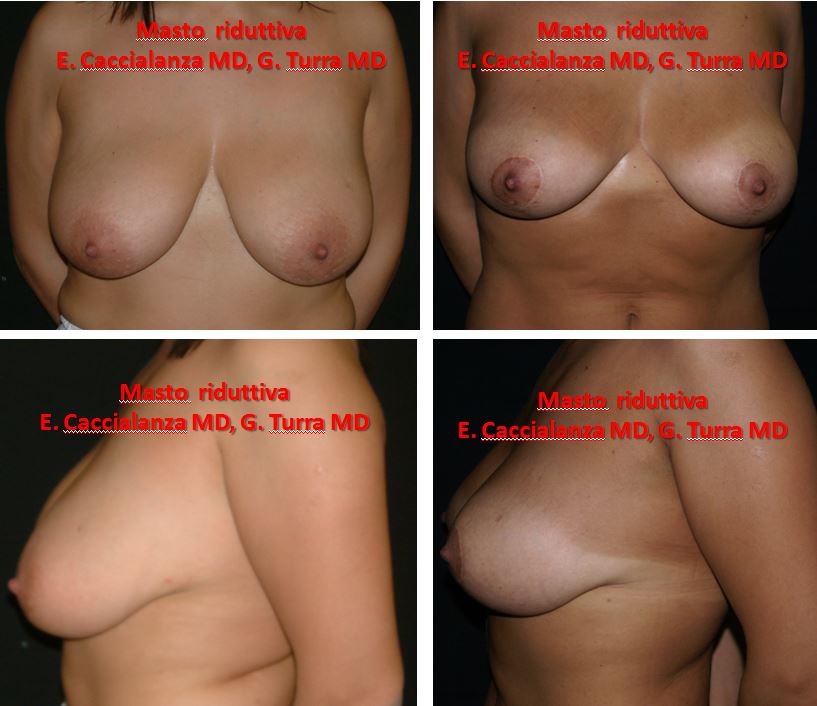BREAST REDUCTION and MASTOPEXY
 L'intervento chirurgico di riduzione del seno viene chiamato mastoplastica riduttiva. L'intervento chirurgico di riduzione del seno viene chiamato mastoplastica riduttiva.
Breast reduction surgery is called reduction mammaplasty. When the breast should not be reduced, but only "raised", it is called Mastopexy
Mastopexy can be performed alone when a patient's breasts are sagging but have an adequate volume, or, associated to breast augmentation surgery when breast appear empty and too small. Although the two different surgical approaches are aimed at achieving different results, they are described together as scars are alike in both cases.
The techniques developed for this purpose are numerous, and generally involve a scar around the areola, a vertical scar from the areola to the breast furrow and a horizontal scar under the breast furrow, whose length varies depending on the amount of breast tissue or skin emoved.
Personally I have been using a technique of my own for years which allows me to obtain an adequate breast reduction or lift only using the scar around the areola and the vertical one from the areola to the breast furrow. This way it is possible to avoid the most visible scar, namely the horizontal one, thus allowing the patient to wear also reduced body-coverage swimwear without any scar visible externally.
Examination
Upon examination the volume of new breasts will be agreed with the patient to decide, in case a Mastopexy were advisable, whether to insert an implant to obtain an optimal size. It must be reminded that in young patients the intervention may interfere with subsequent breast feeding.
Surgical procedure
Surgery is performed in general anesthesia and lasts two to four hours (a Mastopexy takes less, while a significant breast reduction takes longer). Longer surgical times are needed as breast reshaping as well as suturing must be performed with great patience. Almost all sutures are performed internally.
After-surgery
Already on the day after the surgery the patient will be discharged from hospital, wearing a slightly elastic bra. The new breasts will look overly pushed up: this should modify within a month during which time the new breast will be showing a more and more natural look. Patients are recommended not to make any efforts over the first week and within a month they will be able to resume any sporting activity. The few external sutures are removed after about ten days.
Potential complications associated with breast reduction/mastopexy are those common to all surgical interventions, such as the appearance of a hematoma or an infection.
To prevent them, some measures are adopted, such as not taking any anti-inflammatory medications over the week before the operation so as to avoid an increased risk of bleeding, and the prescription of antibiotics after surgery. In addition, breast reduction mastoplasty involving removal of a significant amount of fat require placing of drains which will be removed the following day. In case of significant breast reduction, partial tissue necrosis is rarely reported. This will involve longer healing times and lesser quality scarring, which could require surgical correction in local anesthesia.
Using the technique described, even avoiding the horizontal scar at the breast furrow, a small irregularity may sometimes appear at the end of the vertical scar. This one, too, can be easily corrected surgically in local anesthesia.
Equally unpredictable is the quality of the scar in the submammary furrow: despite sutures are made so as to minimize any possible sign, in some patients scarring is not optimum quality, and may remain visible at a distance of time. Finally, if an implant is inserted during mastopexy a capsular contraction may emerge.
| BEFORE AND AFTER |


|
|



















